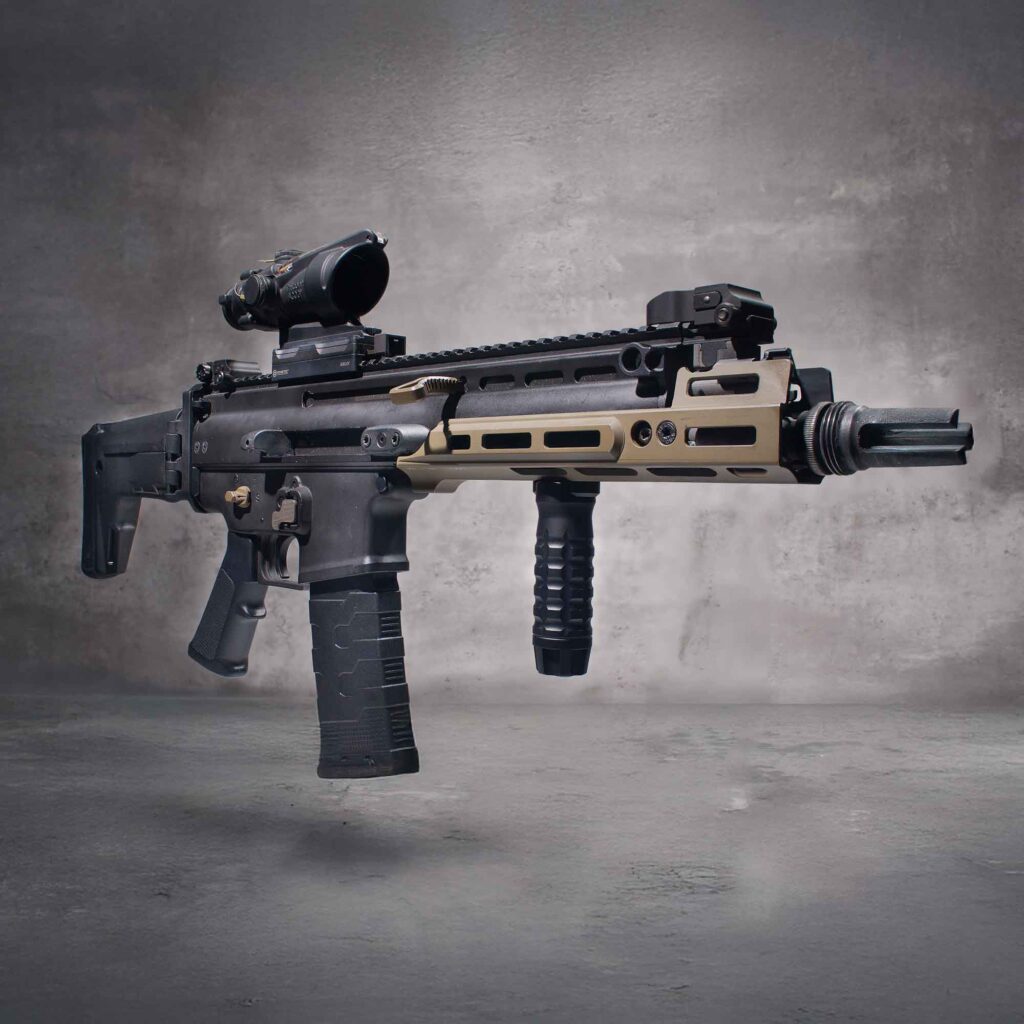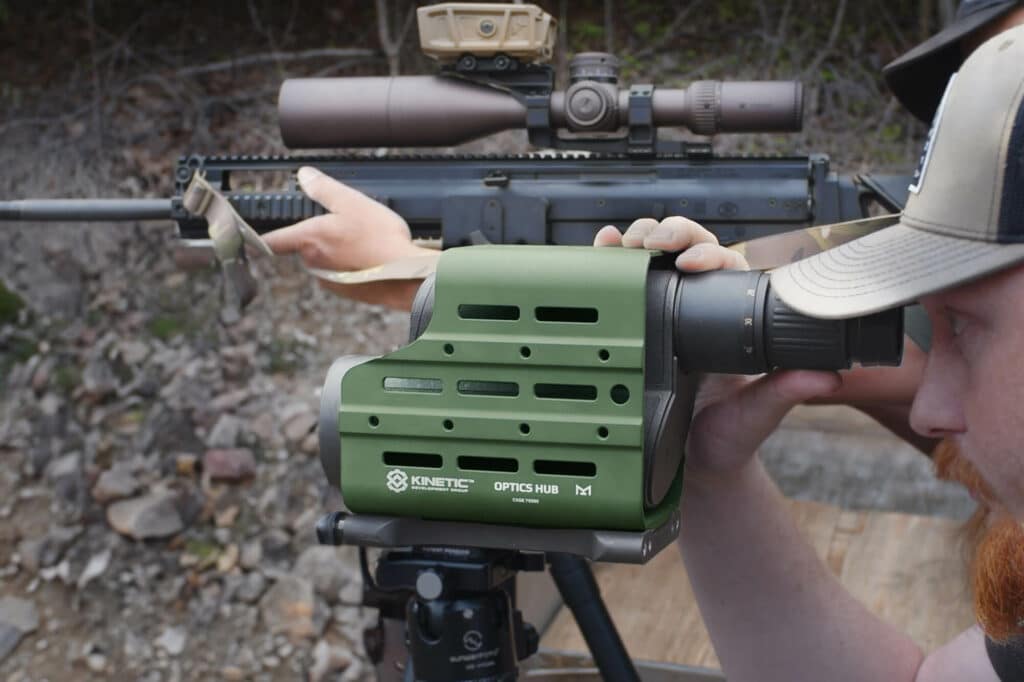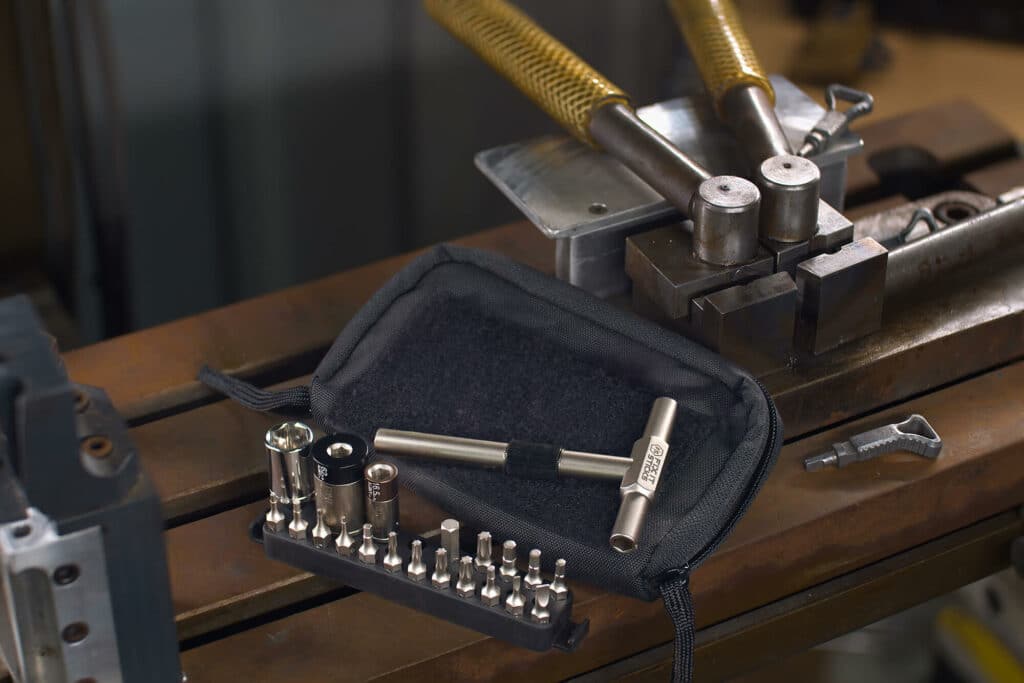If you’re building a new rifle or upgrading your current AR rail (or you need a reason to spend some money), chances are you have invested some amount of time online or in-person interacting with other members of the firearms community. If you stick around long enough, you start to notice a revolving door of trends that seemingly pop up and fade away into the ether. Some of these trends are fueled by the latest and greatest military technology, others by competition shooters or, maybe it’s a viral video of a Nashville cop smokin’ some assclown with an LPVO. Whatever the reason, I always strongly encourage people who are building their rifle, whether it’s their first or fifteenth, to consider the needs for that particular firearm. Trends are fickle, which can make it difficult to navigate sometimes. What’s new, cool, and exciting might be just that. New, cool, and exciting might lead to a really cool looking gun but does it function well in your hands, and does it fit your needs? Not letting the internet dictate what parts and accessories you use can, in most cases, lead to you becoming a better shooter. Contradictory, I know, I’m just some schmo on the internet but bear with me as I discuss the “trend” of longer than necessary rails and handguards. Some of the best shooters in the world tailor their firearms exactly to their needs, setting the trends not following them. Think of the competition shooter who uses precise hand-loaded ammo cycling through a super lightweight race gun or the Special Forces operator who sets-up his firearm specifically for the mission at hand. These shooters don’t follow trends but are constantly testing and trying new equipment that will best match their needs.
Now before I go any further, I want to discuss my background so you as the reader have a complete understanding of my expertises (or lack thereof). If you couldn’t care less about me then just skip to the next paragraph where I start to dive into why I believe shorter rails are often more superior. The main point I want to drive home with this paragraph is complete transparency and to get you thinking about your next build differently. Okay so to start, I’ve been shooting since I was a little cub scout. After high school I joined the US Army. In the interest of complete transparency, I was not a direct combat MOS, I did not go to war or engage in any combat roles. Following my tenure in the Army, I continued to shoot recreationally whenever the opportunity allowed. That is until I got hired here at KDG. Once a part of the KDG team my shooting cadence dramatically increased taking and attending several different courses from Carbine1 up to Mountain Sniper, training with local SWAT and LEO guys, as well as gaining a plethora of knowledge just being in and around the firearms industry. Not peacocking, I just want whoever reads this to understand that I’m just some Joe that likes to shoot (and wishes I could shoot more often).
AR Rail Comparison
For the duration of this blog post I’m going to be comparing our AR-MREX 13.5 inch to the AR-MREX 11.5 inch. I have had both lengths on my rifle and after much time using both, I think the 11.5 length is far superior and lends several advantages over the 13.5. I feel as if these lengths are fairly common and very similar to many other brands’ AR rail size options available today. I will be explaining my personal AR and some of the accessories on my gun, my experiences with both lengths and the dramatic changes I experienced when I randomly decided to go against the grain. For those of you who would like a body size comparison I’m 6’2”, with a 72-inch reach. I want to highlight this so you know that even someone who’s tall with long arms isn’t necessarily disadvantaged with a shorter AR rail. The gun I will be discussing today is a 16” mid-length AR with an ACOG + RMR combo, Modlite and Mod-button, Railscale & Magpul MBUS Pro front sight. Fully loaded (30rnd mag) my gun comes in almost exactly at 8.5lbs. All this info will be important later.
Why? Well for some, the length of your barrel will dictate almost completely what length AR rail you can use. When I was building (and rebuilding and rebuilding) my rifle, why did I finally decide to go with the exact same AR rail I had just 2 inches shorter? It simply boils down to need vs ‘unknowing’ want. Originally built with a 13.5 AR-MREX, my thought process was; “Longer is the way of the internet.” It allowed for more real estate for accessories, a more modern grip and is also what I saw most commonly on the range, posted all over the internet, and what was primarily being used by military and law enforcement, so why not on my gun too? In the ever-growing attempt to better myself, I stopped one day to look at the grip I had on my rifle and I noticed that my support hand wasn’t gripping the very front of the AR rail. Taking a look at my hand placement I noticed there was a bunch of space in front of my support hand, that was more or less not needed. I said “fuck it, lets try a shorter AR rail and see what happens.” The immediate change in weight, picking up my rifle for the first time with the new 11.5 installed, was mind boggling.
That’s right, I said weight! “So how much does 2 inches really affect the weight?” Only about an ounce… well actually, exactly 1 once with the AR-MREX. BUT! It’s not just about the weight of the AR rail, it’s about the weight distribution of the firearm. Accessories add a lot of weight that often gets overlooked and obviously the more you add the more the firearm is going to weigh, “ounces equal pounds” as the saying goes. On my rifle; with a front sight, light, switch and grips it’s a combined weight of about 1 pound. Nothing out of the ordinary for a defensive setup, in fact some might have significantly more weight due to IR devices and suppressors which adds a lot to the overall firearm. All this, need I remind you, was previously in front of my support hand. The shorter AR rail not only shaved an ounce, but it also shifted that pound (or more) of accessories 2 whole inches toward my body. That 1 pound was no longer a fulcrum in front of my hand but rather sitting directly inside of my hand. This shifted the balance of my gun significantly, making it feel even lighter than just an ounce. This shift in weight allows me to have more control, better recoil management over the firearm while reducing fatigue. All major advantages previously undiscovered.
Heat is another clear advantage worth noting. For those of you like me who have a mid-length gas system whose grip seems to wrap perfectly around said gas system, heat management is important. Heat management is often an afterthought until you hit the range and run the gun. A shorter AR rail will obviously trap less heat coming off the barrel, 2 inches less in my case. The inverse of less heat to trap means more heat can also escape. Less rail, less area to capture heat equals colder grip. For me it was noticeable too, no more reaching for my gloves after a heavy volley of fire. The AR-MREX is already naturally great at sheding heat due to its shape, the ventilation holes on top, as well the large intake vents on the bottom. We will be detailing the MREX shedding heat in greater depth in later blog posts but it’s important to think about how you will be using the rifle and if heat management is important to you or not.
Finally, we have accessory functionality. For my operators and home defenders out there who require the use of a flashlight, this advantage can make a world of difference when it really matters. A cleaner flashlight lens! Yes, all you long AR rail folks who like to push the lens right next to the muzzle have inevitably, or will inevitably, get a nice thicc layer of carbon buildup on that lens impeding your flashlight’s functionality. Sure, you don’t need a shorter AR rail to move your light back further but a shorter AR rail kind of forces you to. The same goes for lasers. Much like the MREX, every quality AR rail should maintain zero for electric sights no matter how you mount them. The longer the rail the more stress is applied to that AR rail and the great potential for shifting zero. No bueno when you’re relying on that laser for accurate and consistent shots.
A shorter rail might not be your bread and butter. Thats the great thing about building guns, you get to completely and unequivocally tailor that rifle to you. For example; PRS shooters straight up might need a full length AR rail for their bipod and clip on night vision. SWAT guys running 10.3s or 11.5s obviously can’t use a longer rail. Maybe you hate exposed barrels and that’s cool too. Whatever you want out of that rifle, don’t forget to strongly consider the requirements you expect of your build.
Quick recap for those of you who just jumped ahead to the end here. Less weight, better weight distribution allowing for more control and less fatigue. Increased ventilation and the firearms ability to shed heat. Less wear, and increased functionality for accessories such as flashlights and lasers. Significant advantages gained simply by not following some look-cool trend and exposing that barrel a bit. I implore you to remove the rose-colored glass and take a good long hard look at your firearm. When building your next gun, your new gun or modifying your current gun, consider what you need that firearm to do. Experiment with your build, as it will only improve your abilities knowing what does and doesn’t work for you. Slight changes such as removing 2 inches of AR rail real estate might not sound like a big difference, but it might make all the difference in the world with how your rifle feels and performs in your hands. Consider the shorter option, Gain The Advantage.
– Jay –






















